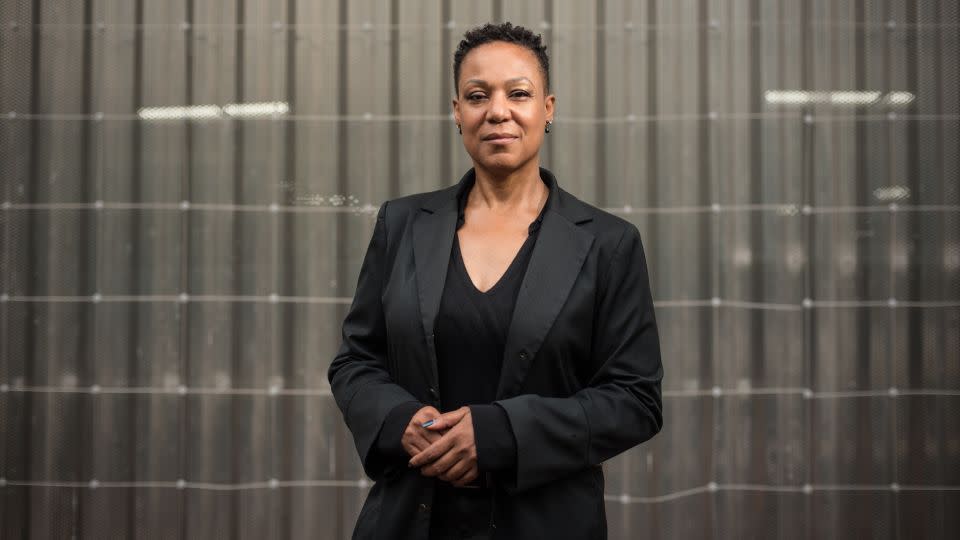Opinion: Police can’t ‘protect and serve’ while sheltering in place
Editor’s Note: Sonia Y. Wiggins Pruitt is a retired Montgomery County, Maryland police captain. She is the founder of The Black Police Experience, which promotes the education of the intersection of law enforcement and the Black community. She is also a professor of criminal justice at Howard University in Washington, DC, and at Montgomery College in Maryland. The opinions expressed in this commentary are her own. View more opinion at CNN.
It was a warm, sunny afternoon on February 14, 2018 in Parkland, Florida. The day likely started the way most Valentine’s Days do — with thoughts of loved ones, candy and special get-togethers. No one could have predicted the horror that would occur later, when 19-year-old former student Nikolas Cruz used an AR-15-style semi-automatic rifle to take the lives of 17 people and wound 17 others at Marjory Stoneman Douglas High School.

Cruz was captured and arrested by police about an hour after fleeing the scene of the crime and is now serving a sentence of life in prison without parole after pleading guilty to 17 counts of murder and 17 counts of attempted murder.
On the afternoon that the high school came under siege, then Broward County Sheriff Scot Peterson, who is now 60, was its assigned school resource officer. He was the first law enforcement officer on the scene after gunshots were fired. It is alleged that after he arrived on the scene, Peterson went to the stairway of a building adjacent to Building 1200—where students, faculty, and staff were under attack — and stayed there for more than 45 minutes without taking any other action.
Peterson was charged with seven counts of child neglect, three misdemeanor counts of culpable negligence, and one misdemeanor count of perjury because of his actions during the incident. His defense attorney claimed he did not know where the shots were coming from, although an audio recording of his radio conversation with dispatch indicates otherwise.
On Thursday, a jury acquitted Peterson on all counts. He wept as the verdict was read, and said, “The only person to blame was that monster…Everybody did the best they could.” The jury’s decision to acquit seemed to hinge on whether Peterson was considered a “caregiver” under Florida law, which defines it as “a parent, adult household member, or other person responsible for a child’s welfare.” However, the broader public conversation had been whether Peterson’s inaction on that fateful day was criminal, cowardly or both.
The shooting is considered the deadliest in history to take place at a US high school. The Columbine mass shooting in Littleton, Colorado in April 1999 is second. It was the Columbine shooting that first prompted law enforcement agencies to implement training on how to respond to mass shootings.
The term “active shooter” became a significant phrase in law enforcement as a result of the Columbine incident. It became the subject of new efforts in training focused on response to mass shootings. While there may be variations, a predominant theme in law enforcement training is the importance of confronting the attacker or attackers as quickly as possible to avoid loss of life.
According to the International Association of Chiefs of Police’s Active Shooter Response Playbook, prior to Columbine, officers would set up a perimeter and wait for the arrival of a SWAT team to make entry into a building where a gunman was, which could cost precious minutes. After Columbine, traditional law enforcement training indicated that any primary officer(s) on the scene are expected to immediately engage the shooter, whether one officer or many — there is no time to wait.
While police officers do not tend towards Monday morning quarterbacking of their colleagues, I have yet to speak to a police officer who agrees with Peterson’s decision to stay in the same place without exploring where shots were coming from.
Inaction goes against the training received by law enforcement officers — and against the training that Peterson received. The expected action is to move forward until the attacker is located. The recent shooting at the Allen Premium Outlets mall in Texas is an example of how an officer should respond and engage – even when they’re unsure about the exact origins of the sound of gunfire.
The families who lost loved ones in Parkland in 2018 still feel that justice has been denied with Peterson’s acquittal. For them, there is little solace in knowing that he is no longer a deputy.
While we can debate whether criminal charges were appropriate (the arrest warrant was approved by a judge), what is less debatable is whether Peterson is a victim for having been prosecuted. He is an officer that many in the community believe did not follow his training as was expected of him. As assistant state attorney Kristen Gomes stated, “The state did not expect Scot Peterson to go on a suicide mission,” but he did have a duty to “confront and engage.”
We must hold law enforcement officers accountable when their failure to follow policy, protocol and training results in critical injury and loss of life. This case is a reminder of community expectations that law enforcement should “protect and serve” — their number one job. That means prosecuting law enforcement misconduct, such as the failure to act during mass shooting incidents where loss of life is at stake. That would be the ethical response to one of the pressing law enforcement issues of our day.
For more CNN news and newsletters create an account at CNN.com

